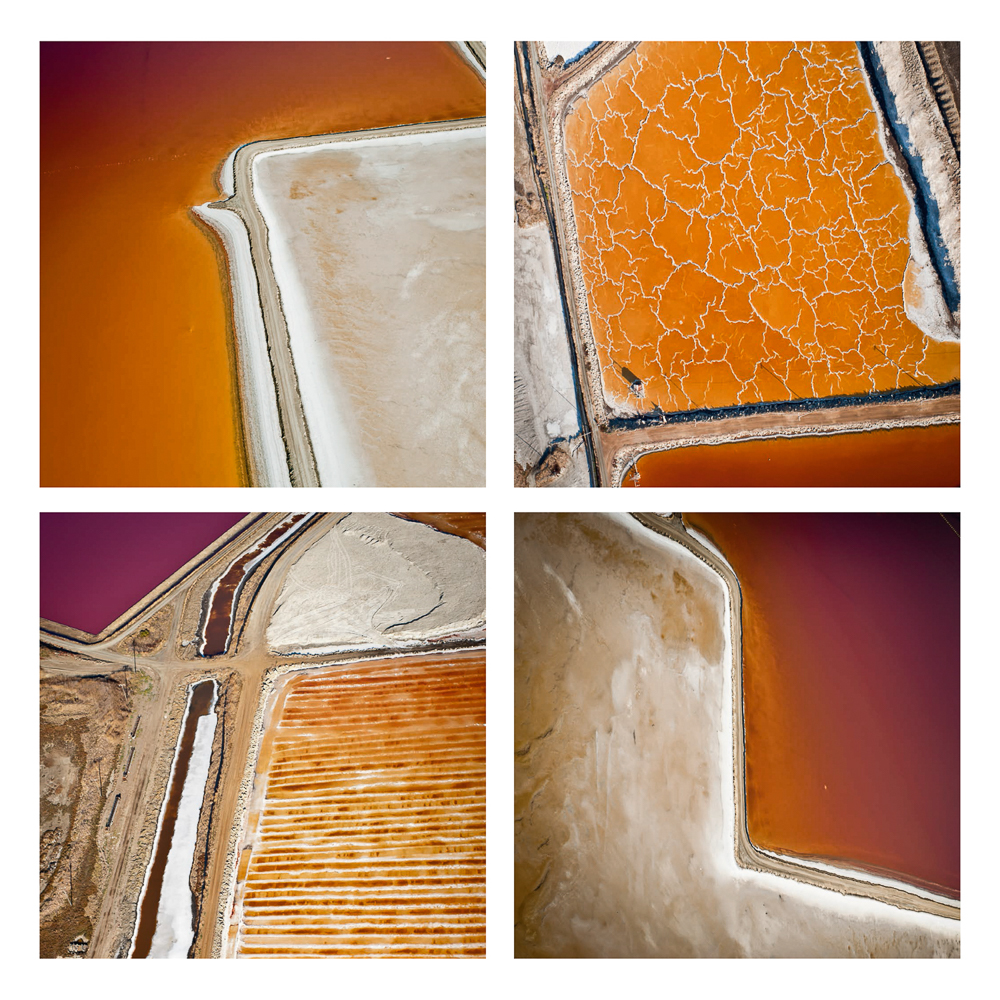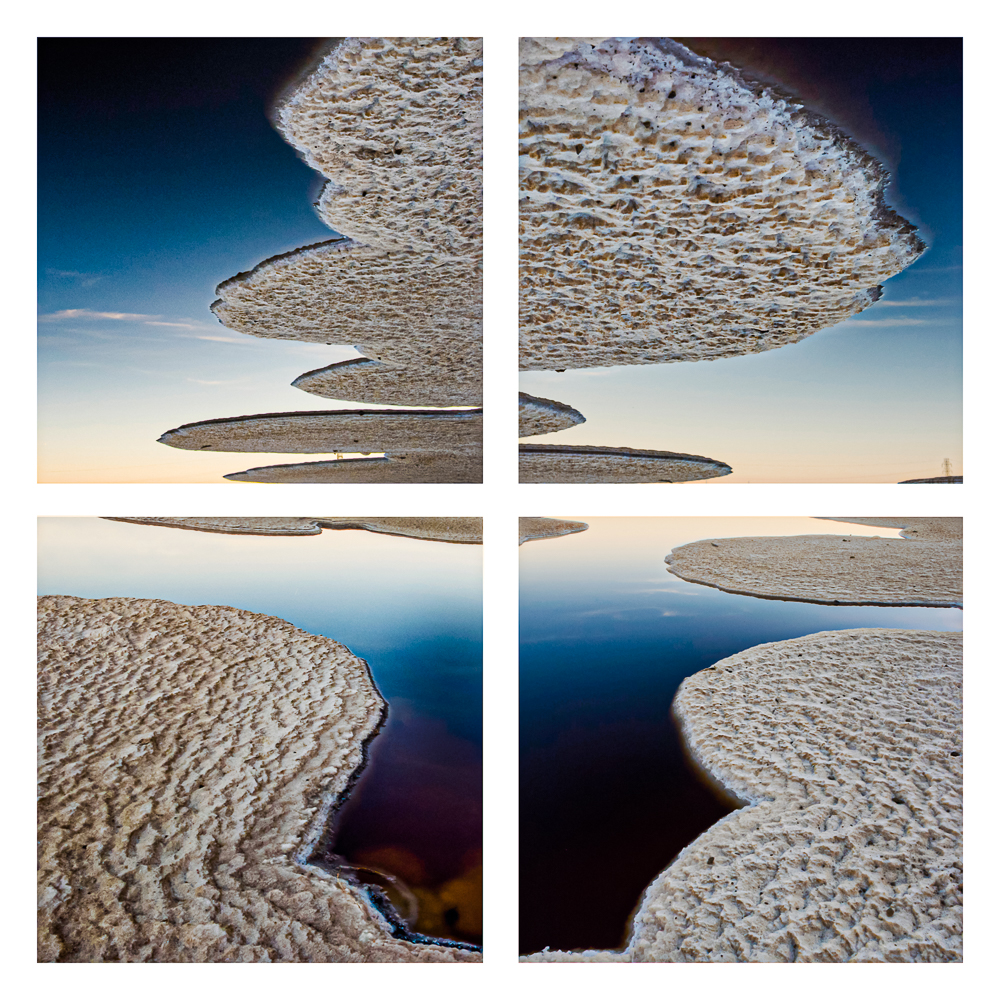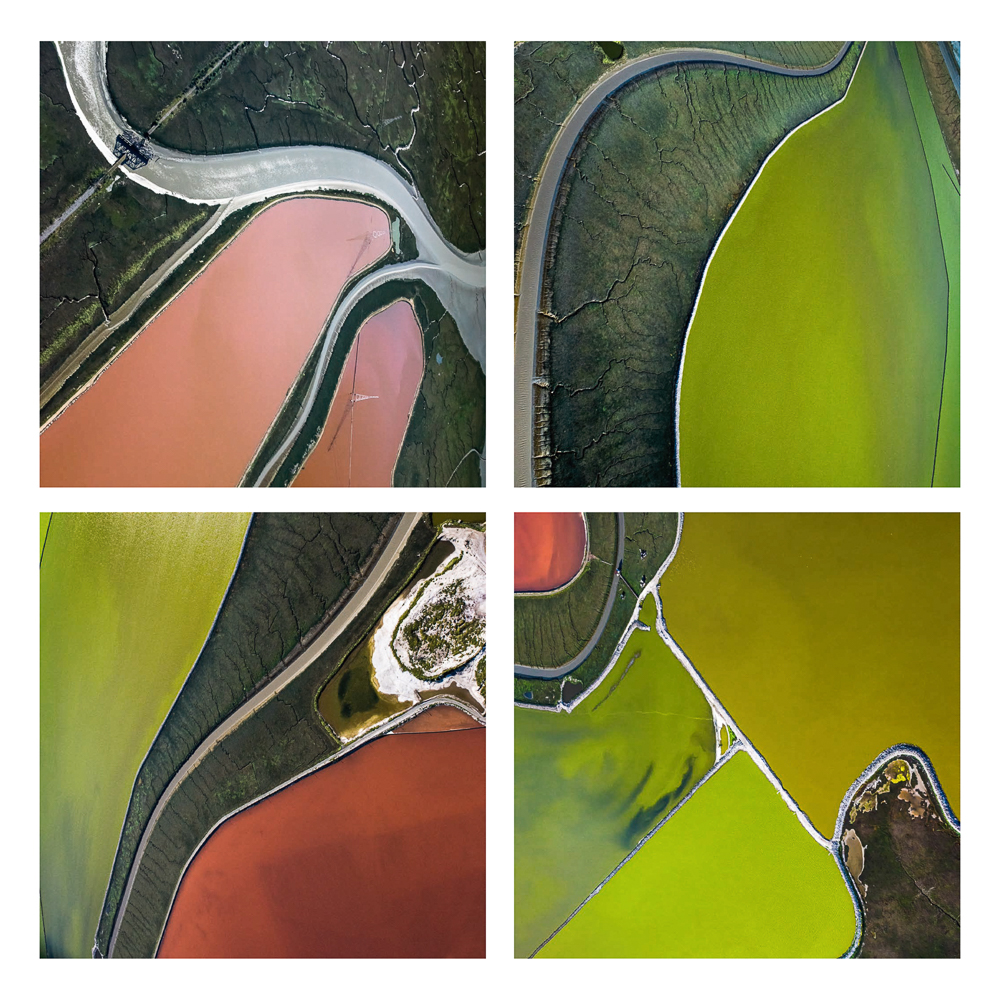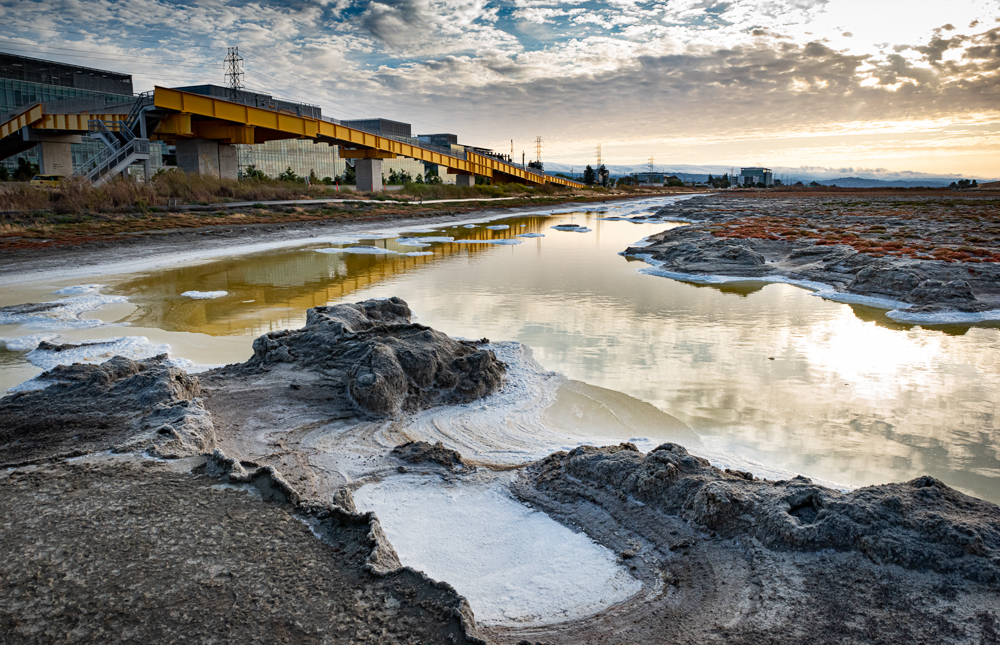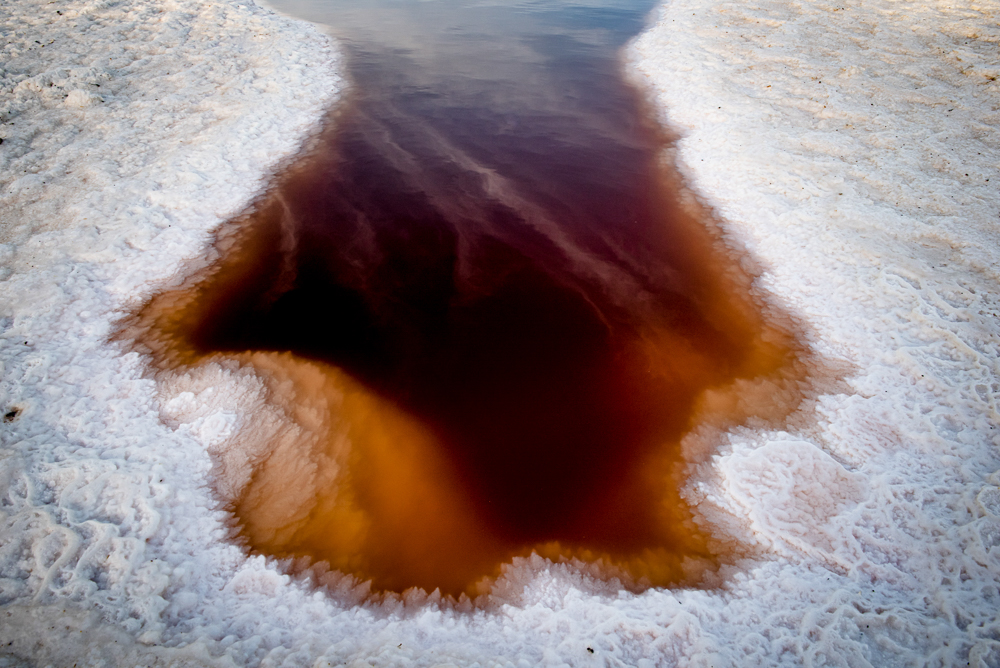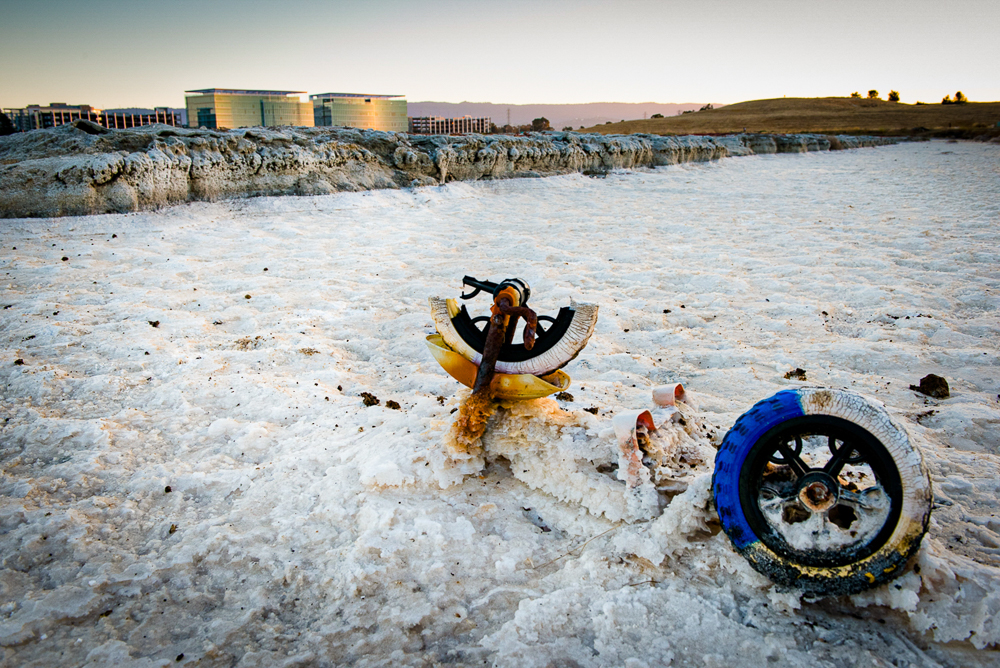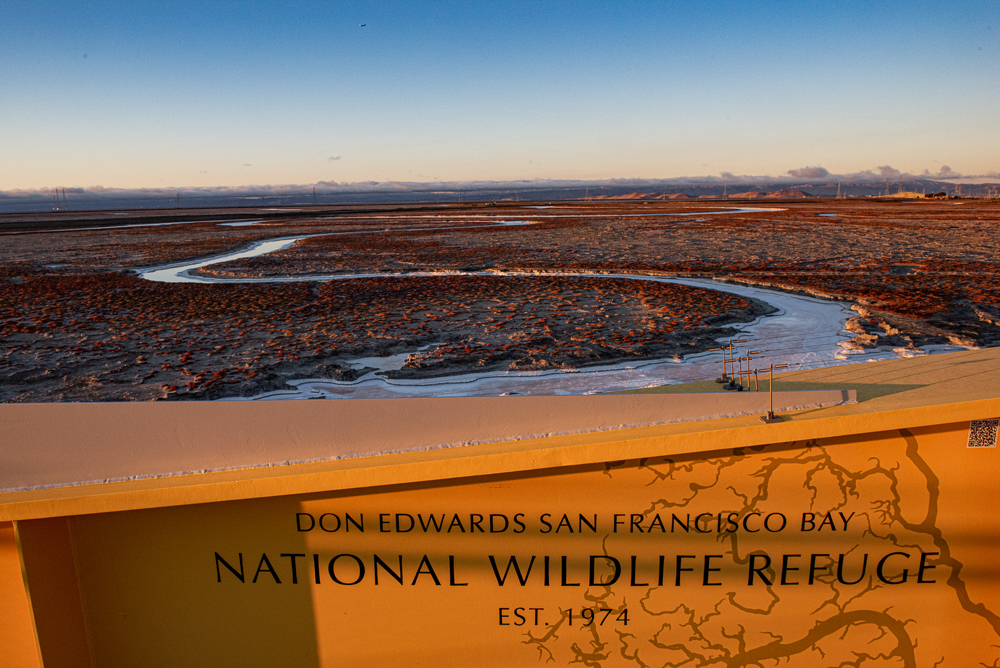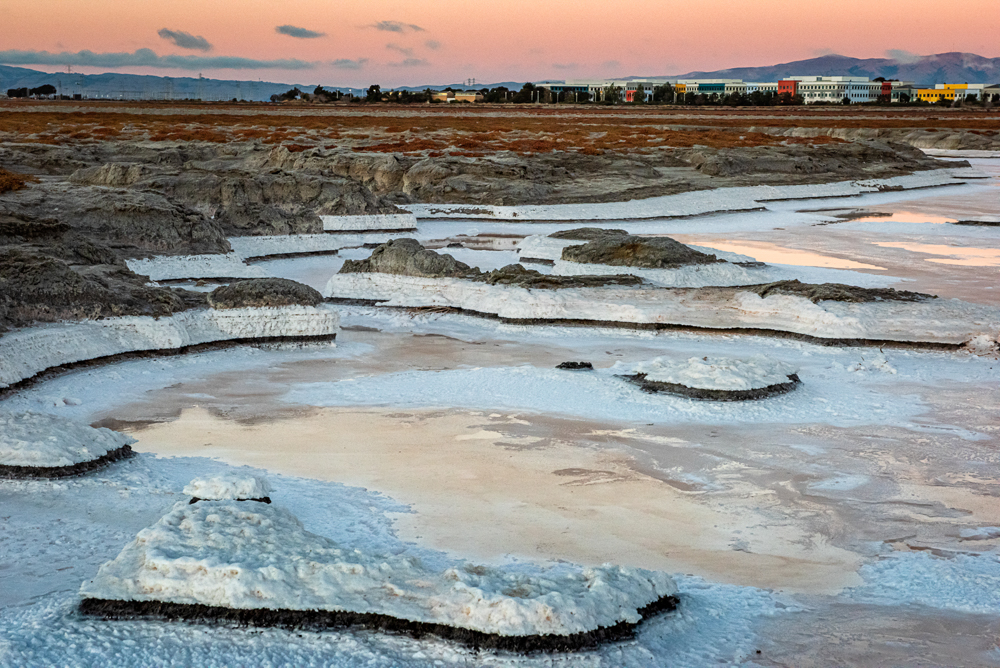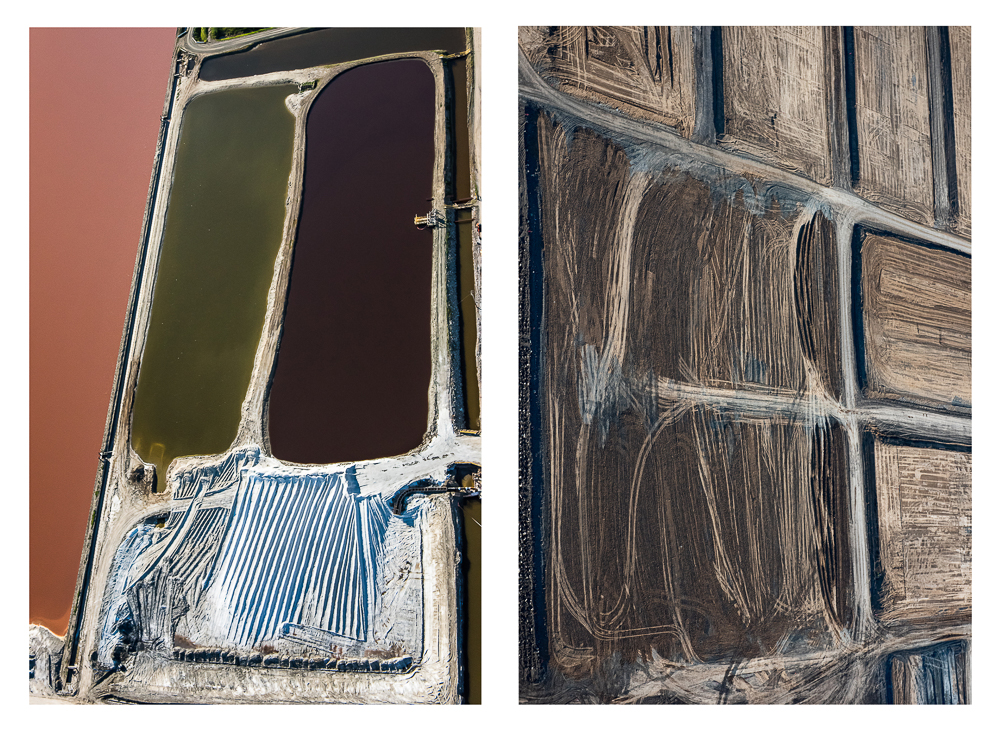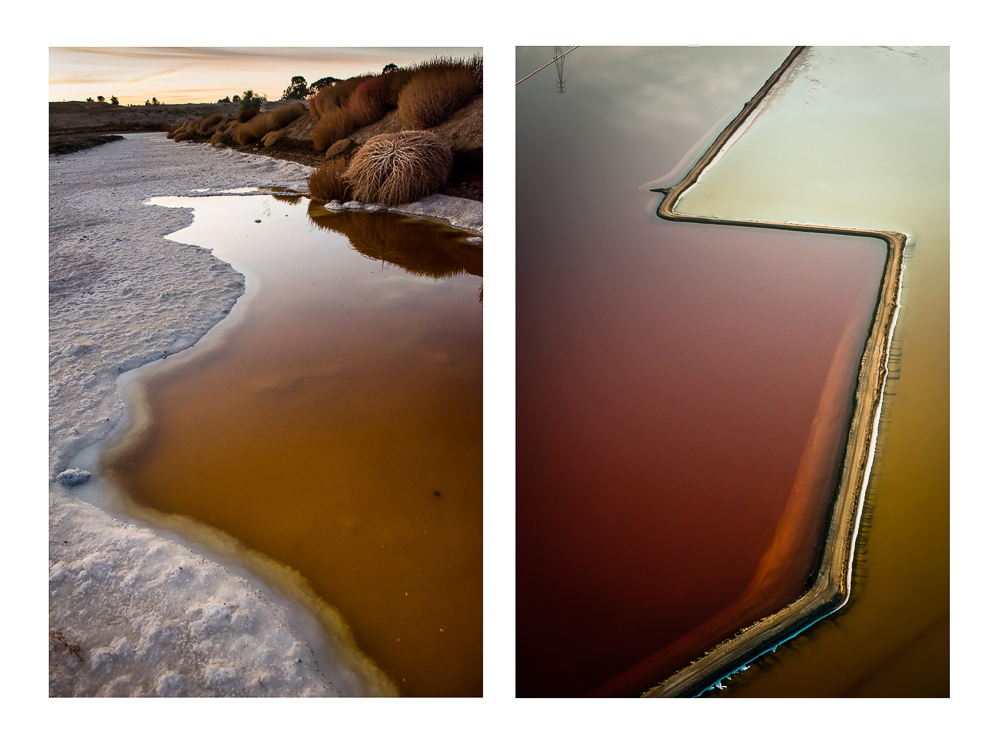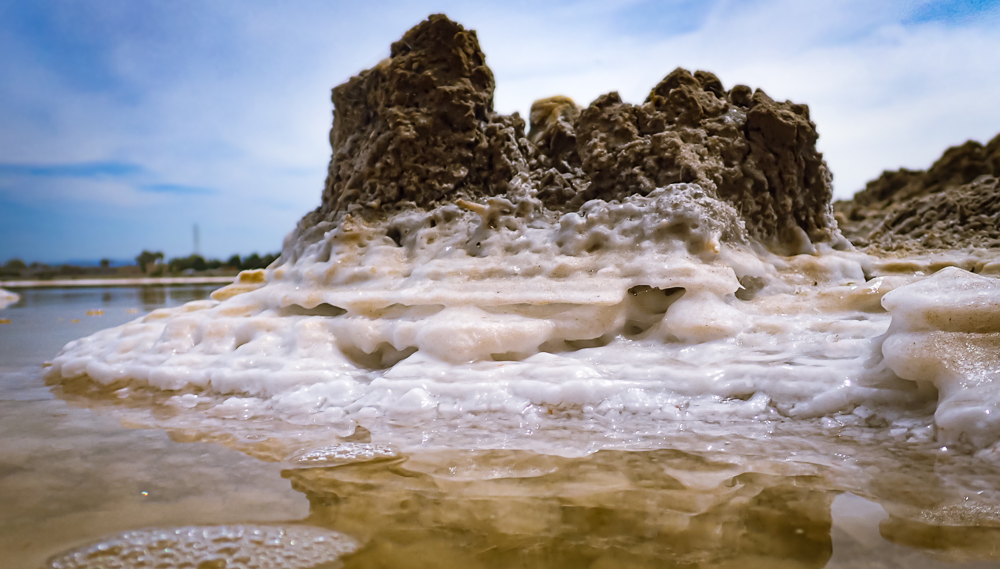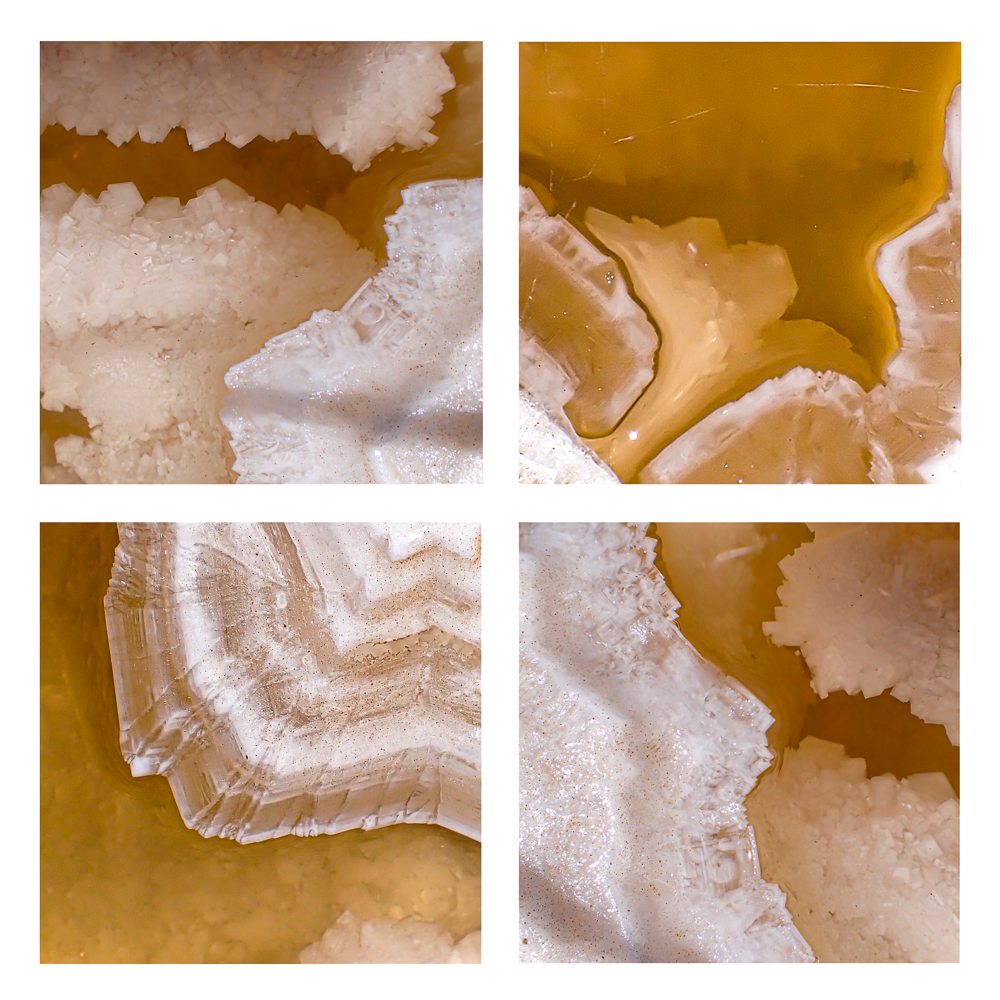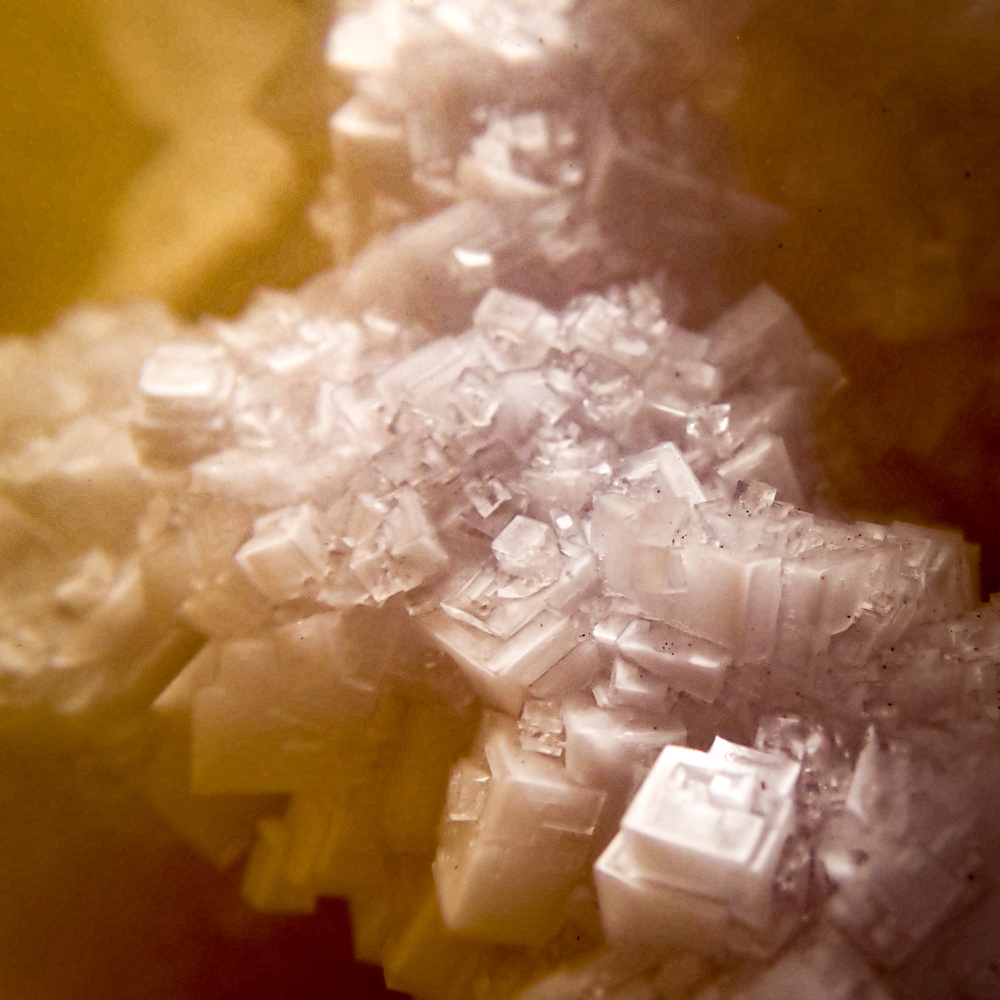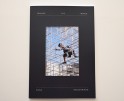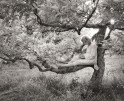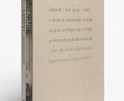Barbara Boissevan: Salt of the Earth
“For more than twenty years I’ve chosen to focus on environmental issues, highlighting the dramatic changes I’ve witnessed firsthand taking place in our environment. I’m driven by the belief that art has the power to inspire and educate. My intention with this book is to remind people (by showing them the visual evidence found in these transforming landscapes), that positive change is possible.” – Barbara Boissevain
Today, Barbara Boissevain, a visual artist and photographer who explores and documents environmental and social justice issues launches her Kickstarter campaign, raising funds for her monograph, Salt of the Earth, to be published by Kehrer Verlag. The project comes out of investigative research on an area both personal and significant: Silicon Valley, where the artist grew up. Her realization that the landscape was filled with environmental toxicity spurred further research into the area. She realized that strides were being made to address the issues and discovered the South Bay Salt Pond Restoration Project, the largest wetland restoration program on the West Coast. Her new monograph will share images made above and below the surface of the earth, drawing our attention with her beautiful juxtapositions of color and form, and then further informing the reader with essays by Laura Noble, a London-based art critic and writer, and John Hart, an award-winning environmental journalist.
Salt of the Earth
In my photographic series Salt of the Earth, I use a vivid and abstract visual language to examine the impact of human activity on the environment, particularly as it relates to the inhabitants of Silicon Valley. Vibrant colors and geometric forms are combined with shifting viewpoints to enhance the surreal nature of these transforming landscapes.
Salt Ponds have existed in the San Francisco Bay since the 1800s and are characterized by environmentalists as having taken away the lungs of the Bay. Currently, they are a part of the South Bay Salt Pond Restoration Project, the largest wetland restoration program on the West Coast. Over the course of the last twelve years, I have deepened my exploration of this constantly evolving subject by adjusting my perspective and photographing from the air, the ground and beneath the water with a macro lens. My photographs of the salt ponds are a visual representation of the ongoing efforts to restore the wetlands and bring back the natural biodiversity of the Bay.
I started going up in a helicopter to take aerial photographs of the Salt Ponds in 2010 and have continued for over a decade. These images reveal human incursions in the landscape resulting in complex geometries and artifacts due to the limited biodiversity. This is evidenced by the apocalyptic oranges, reds and purples where only two organisms can survive in this man-made, high salinity environment: anaerobic algae that produce carotenoids and a brine shrimp species unique to the San Francisco Bay. After several years of taking these aerial photographs, I had thousands of images and I began creating formal grids based on the year they were photographed and a common color palette. Areas of the Bay that have already been restored back to natural wetlands show increased biodiversity with a green color palette. To date I have ten grids that reflect different stages and sites of the restoration project.
In 2020, I began photographing the Ravenswood salt ponds bordering the Facebook campus in Menlo Park, CA, where technology workers look out over these ponds from slick glass buildings. Many of them are not aware that a miraculous transformation from salt production to wetlands is taking place in their own backyard. Photographing from the ground has allowed me to reveal wound-like openings in the earth and signs of new life just beginning beneath the water. The cracked surface of the earth looks almost like an alien planet juxtaposed next to the opulent, manufactured structures cocooning the social media company headquarters. The dystopian nature of these images reflects the dissonance between man and nature that I see threatening our planet and the disproportionate influence these companies have on our future.
In May 2022, I began photographing the Ravenswood pond underwater, and discovered a microcosm infused with hidden beauty. These images uncover a new universe where salt crystals have iterated into congruent forms creating a foreign landscape. The salt encrusted shoreline (only a few centimeters high) now suggests arctic-like mountains of ice and snow. Submerging my camera underwater reveals tiny brine shrimp swimming around the cavernous, berg-like salt crystals. Within this immersed world, I was intrigued to find textures and patterns mirroring the ones I had captured when photographing from the air. I took this discovery to be a sign that I had come full circle with this project.
As an artist, my ultimate goal is to use my artistic practice to raise awareness about the impact of human activity on the environment and the crucial need to preserve our natural spaces. My photographic series Salt of the Earth is a testament to this goal and I hope it will inspire viewers to take action to protect and preserve our planet for future generations.
Barbara Boissevain is a visual artist and photographer from Silicon Valley who explores and documents environmental and social justice issues. Boissevain studied painting at Parsons School of Design in New York, and then went on to receive her B.F.A in Photography from the San Francisco Art Institute and an M.F.A. in Photography at San Jose State University. In 2009, she was awarded the Best of ASMP from the American Society of Media Photographers.
She has exhibited her work widely, including international solo and group exhibitions in the USA and Europe. These include: Memoire De L’Avenir, Paris, France; Photographic Center Northwest, Seattle, WA; the Institute of Contemporary Art, San Jose, CA; Galerie Numero Cinq, Arles, France; the Academy of Fine Arts in Krakow, Poland; and the David Brower Institute in Berkeley, CA. In 2009 she published “Children of the Rainbow,” a book and traveling exhibition that documents humanitarian problems due to climate change, facing Quechua communities in Peru. Her work has been published in a number of publications including Lenscratch and The American Scholar. In 2021 her work was featured on NPR’s “The Picture Show” (in conjunction with the U.N. Climate Change Summit in Glasgow, Scotland) as well as on the PBS News show “Something Beautiful.”
Her art has been acquired by numerous public and private collections around the world, including the Google corporate collection. For the past seven years, she was an artist in residence with the City of Palo Alto’s Cubberley Artist Studio Program in Palo Alto, California. In 2018 she was awarded an artist-in-residence in France at Galerie Huit in Arles, France in conjunction with the Les Rencontres de la Photographie Festival. In July of 2022 she was invited to Atelier 11 for a solo residency through L’AiR Arts international residency program in Paris, France. Her upcoming book “Salt of the Earth” will be published by Kehrer Verlag in the Fall of 2023.
Follow Barbara on Instagram: @barbaraboissevain
“Barbara Boissevain’s Salt of the Earth crystallizes the complex endeavors of salt extraction into a dazzling celebration of color, abstraction and mind bending vistas. What a delight it is to see a positive environmental story made over a long period of time – revealing what we are really capable of when we take care of the planet & reverse the carelessness of the past.”—Laura A. Noble (LANG Gallery, London), 2023
Posts on Lenscratch may not be reproduced without the permission of the Lenscratch staff and the photographer.
Recommended
-
Kinga Owczennikow: Framing the WorldDecember 7th, 2025
-
Richard Renaldi: Billions ServedDecember 6th, 2025
-
Ellen Harasimowicz and Linda Hoffman: In the OrchardDecember 5th, 2025
-
Linda Foard Roberts: LamentNovember 25th, 2025
-
Jackie Mulder: Thought TrailsNovember 18th, 2025


